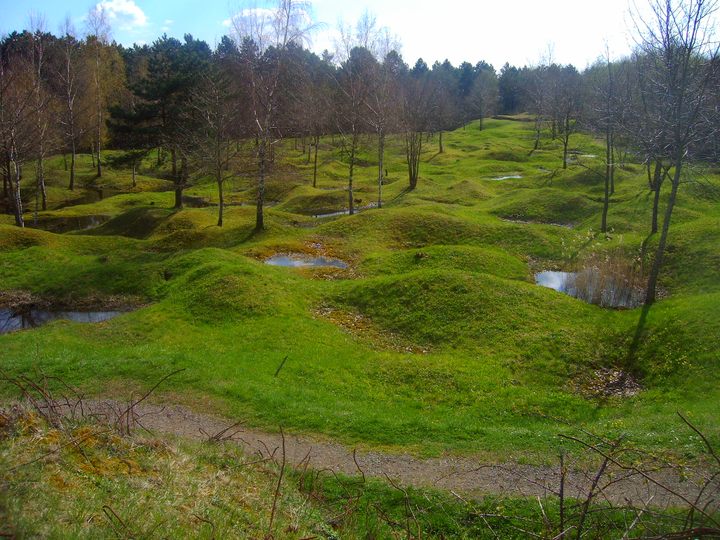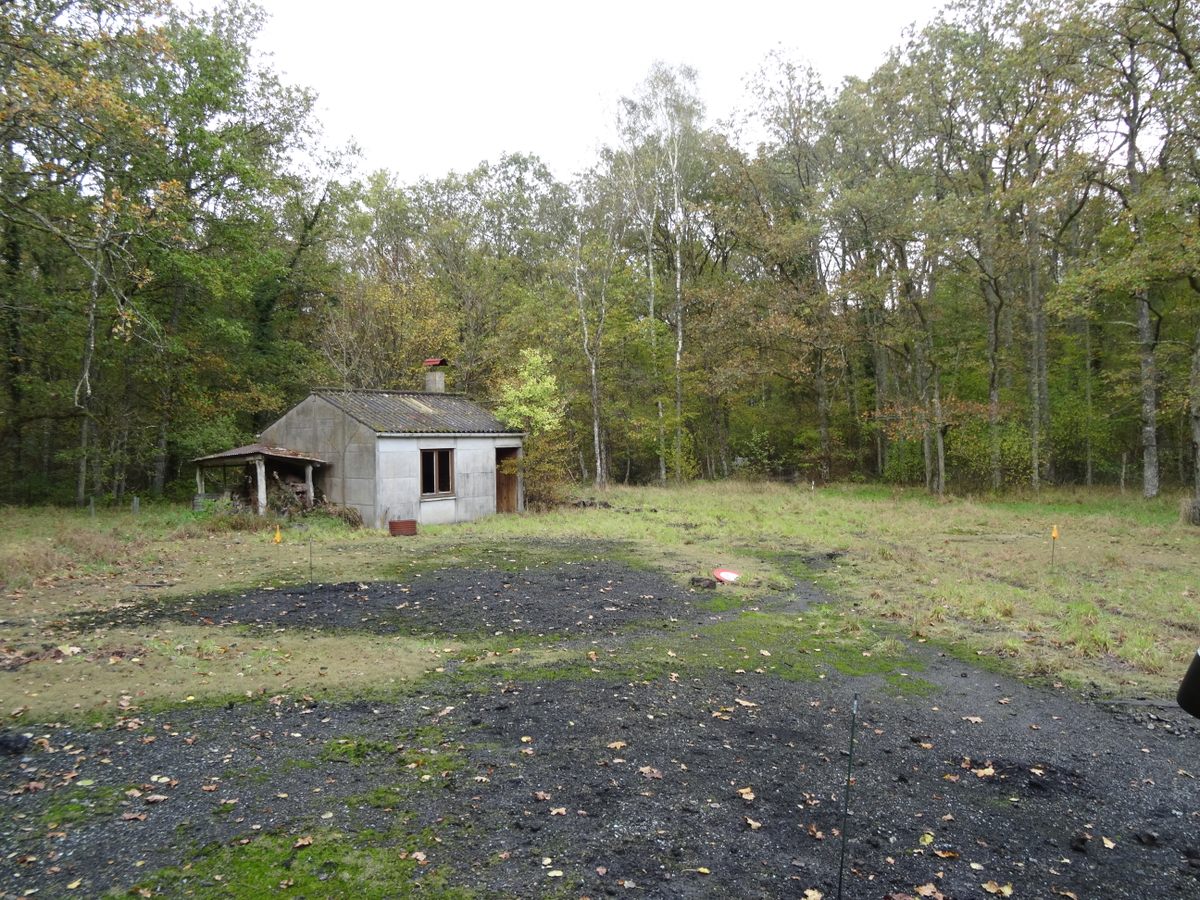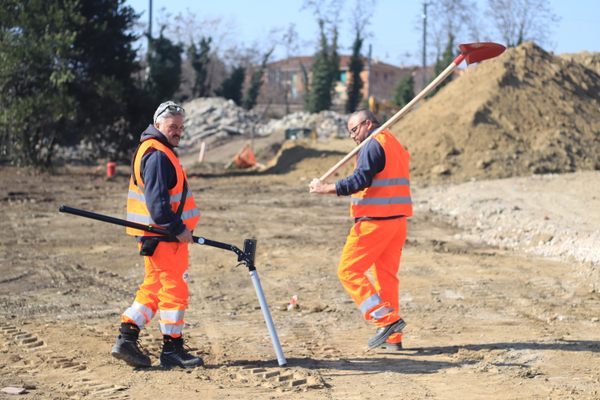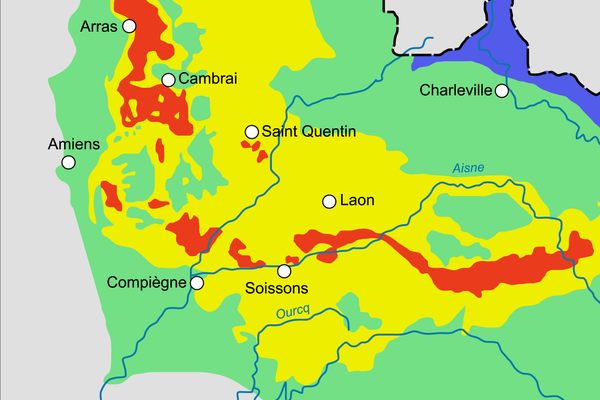
Plants, Heavy Metals, and the Lingering Scars of World War I
A closer look at the hardy residents of some of our most damaged landscapes.
Excerpted and adapted from Islands of Abandonment: Nature Rebounding in the Post-Human Landscape, by Cal Flyn. Used with permission of the publisher, Penguin Random House.
In 1919, all along the Western Front, French authorities were taking stock of the devastation of World War I. From the border with Belgium at Lille to the border with Switzerland near Strasbourg, this most brutal of wars had torn a rupture through the land: It was ripped, cratered, pitted, charred by a billion artillery shells fired over four years. “Where there are no dead,” wrote Henri Barbusse, “the earth itself is corpselike.” A Frankenstein landscape, stitched and stapled together, which harbored in its flesh millions of tons of unexploded munitions and chemical weapons enough to kill an army, all over again.
Economically hobbled by war, and awed by the scale of the problem facing them, the French authorities developed a triage system: They surveyed the régions dévastées and drew up a series of maps that charted areas believed to be devastated beyond repair. In total, more than 460 square miles were classified in this way, shaded with a red pencil and declared no‑go areas. Though over the following decades, this total was much reduced, but near Verdun, where the land was choppier, steeper, more remote, and the damage total—a “biological desert,” as the French botanist Georges H. Parent described it—much remains off-limits.

After a period of uncertainty, it was decided to plant a shroud of trees over the war zone—a living sarcophagus that might stabilize the soil and contain the terrors within for a generation or more. A forest of forgetfulness. Where the land was worst affected—soil stripped almost to the bedrock—they planted black pines, one of the only hardy species that could thrive there. So it remains today. They call it the Zone Rouge.
For a hundred years a forest grew up across the land, tall and dark and impenetrable, whose undergrowth curled and snarled into a thicket of bramble and blackthorn. In the Zone Rouge, however, there is a place where the trees never grew back: a clearing in the woods, where the oaks and hornbeams part to reveal a small round pool of what appears to be gray gravel, or tar, or ash. A swatch of ground where nothing will grow.
The secret to this sterile wound lies also in the decisions made after the war. At armistice, millions of unused shells lay piled up, ready to be fired. It wasn’t clear what should be done with these surplus weapons of mass destruction. At Verdun, the decision was made to recover what ammunition they could at the military camps, but to gather chemical weapons—200,000 of them—at a farm near Gremilly. Here was mustered an array of the most unpleasant hexes one man can cast upon another: mustard gas, tear gas, phosgene—whose pleasant odor of freshly mown hay belies its deadly consequences—the sneezing gas diphenyl-chloroarsine, the garlic‑scented vomiting agent diphenylcyano-arsine. Then, finally, in 1928, they dug trenches as if for a mass grave, piled in the canisters, and set them ablaze. Hence the name: la Place à Gaz, the Place of Gas.
The clouds of arsine gases produced during the burn poisoned the land and left it bare. It appears like tundra, or melted tarmac: waste ground of the very purest kind.

Many of the so-called heavy metals—in this case used as kind of a catch-all term for cobalt, copper, iron, nickel, zinc, and others—are essential to the fundamental processes of life, but in quantity they become toxic. When plants come into contact with metal‑tainted soil, strange things can happen.
In the 1950s, the Russian naturalist N. G. Nesvetaylova discovered that it was possible to turn poppies different colors by the adding of various metal salts to compost: Zinc compounds produced flowers of lemon yellow, for example, whereas boron turned their leaves dark green. Copper, on the other hand, produced pale, blueish, “dove‑colored” leaves. (In this way a gardener with fairy godmother aspirations might sprinkle manganese on the soil beneath an almond tree to turn their flowers’ corollae from white to pink; aluminum sulfate over the roots of a hydrangea will turn its cotton-candy heads mauve, then indigo, then baby blue.) And there was a combinatory, witches’ brew aspect to the process: Two or more salts added together, like a tincture, and the flowers would take on unexpected new shades, wholly different from those seen when the metals were added separately.
Large-mouth poppies (Papaver macrostomum), common to the Middle East and Kashmir, develop double‑decker petals when growing in high-zinc soils, while the ladybird poppy (P. commutatum) of the Caucasus alter the pattern of their spots in response to copper-molybdenum. In the areas of greatest mineralization, their dark spots elongate until they meet at the center to form a cross—X marks the spot—a signpost to the contents of the underworld.

Plants growing in the vicinity of manganese might boom obscenely in size, reaching gigantic proportions with luxuriant greenery. Copper sulfate or chromite will produce dwarfs. Symptoms such as these have been used successfully by prospectors across the globe for centuries as “bioindicators” of minerals in the soil below. As explorers once scanned their environment for willow or cottonwood to find water in the desert, prospectors raked the landscape for plants displaying chlorosis, the floral equivalent of anemia, which shows up as a bleaching or fading of the leaves, except along their darker veins, which stand in dramatic silhouette.
Better yet, they might spot plants whose presence alone signaled valuable metals. Early Scandinavian miners, for example, were guided to their target by the kobberblomst (copper flower) and the kisplante (pyrite plant, or Lychnis alpine), tiny pink‑flowering campion whose delicacy belies an extreme hardiness, an ability to thrive where sometimes no other species can.
By the sixth century, the Imperial Chinese were already sensitive to the potential of metal‑loving plants as a means of prospecting, producing detailed manuals listing different species and their mineral familiars, and the symptomatology associated with specific metals, their instructions sounding with the prosody of incantation, of summoning spells. (“If leaves … are green, and the stalks red, much lead will be found below …”)

In such way, the expert geobotanist can glean a great deal of complex information from flora. In the Copperbelt Province of Zambia, for example, at least 27 flowers live almost exclusively in soils tainted with copper and cobalt: the thicker the pelt of these flowers, the greater the degree of mineralization. Similarly, in the Alps one might learn to predict the presence and concentration of zinc by the depth of color of the flowers of the tiny, lemon-yellow calamine violet. In Australia, two plants—a type of flowering pea (Tephrosia) and the paper-petaled herb Polycarpaea spirostylis—come together to form a map with contours: the Tephrosia tracing the outer edges of copper deposits, but giving way to the flag-waving Polycarpaea wherever the copper reaches more than 2,000 parts per million.
Some regions are so profoundly impacted by the presence of concentrated metal ores that even these rare “metallophytes” cannot get by. Such areas, denuded of vegetation, might appear as a sickly pasture that pockmarks otherwise lush, forested areas. Platinum has been found under bald spots in the Urals and South Africa; in Russia, boron. Folk stories spring up around such oddities: One such spot in North Carolina is known as the “devil’s trampin ground,” the source of its barrenness yet to be determined, and may predate human presence in the region. But for heavy metal contamination to be so extreme as to render a place barren dirt is rare.
La Place à Gaz is such a place.

Those plants that grow as a wan halo around the poison ashes of la Place à Gaz: It was those I was here to see. On first sight, they seemed disarmingly familiar: the haze of what is called tufted grass and the Americans call “velvet” grass for its peach-fuzz leaves—common to marshland, verges, neglected waste ground—and, hidden beneath, like an underfur, the powdered goblet lichen Cladonia fimbriata. Neither are exotic species. But plants like these are specially adapted to survive in what would be otherwise be a dangerous environment. They limit their intake of the metals, preventing a build‑up to toxic levels in their bodies.
Their neighbor, though, a soft and feathery moss known as Pohlia nutans (“nodding thread moss,” after their tiny, many-headed fronds), uses a more complex strategy: Rather than close itself off to the metals in the soil, it throws open the doors, transporting metal salts upward into its limbs and stashing them away. Magpie plants of this kind are known as “hyperaccumulators,” and it’s not totally understood why they do this. It may be a form of self‑ defense: making themselves bitter herbs, to deter grazing animals. The effect, though, can be extraordinary. For example: The Pycnandra acuminata is a silver sylph of a tree that grows in the misty rainforests of New Caledonia. When cut with a knife, it bleeds a spectacular latex sap the color of verdigris, containing up to 26 percent nickel. In postindustrial mining regions of Wales, lichens soak up iron or copper from the rocks they grow on, turning rust-orange or turquoise in the process—the spattered paint of an artists’ studio—and rendering the metals insoluble, and therefore harmless.
Though metallophyte species like these have evolved naturally, finding toeholds in outcrops of metal ores and at sites like the Tantramar “copper swamp” of Canada’s New Brunswick, they are now much more likely to be found in human-impacted ones. Mine tailings, spoil heaps, slag tips, postindustrial sites of many kinds—and postconflict ones too, like la Place à Gaz. There has been an exponential growth in land despoiled by heavy metals over recent decades. Globally, more than five million such contaminated sites have been reported; more than 300,000 square miles of contaminated soil in China alone.

Knowledge and appreciation of such plants has grown in recent years, but their love of despoiled landscapes gives conservationists pause when it comes to protecting rare and unusual species. Near Swansea, in southern Wales, I once visited the former site of “Copperopolis”—an enormous complex of smelting furnaces built during the 17th and 18th centuries, which left the Lower Swansea valley a lunar landscape besmirched with lead, chromium, and copper in the years after the industry’s collapse. This scrappy wasteland, however, had recently been designated a Site of Special Scientific Interest thanks to its unusual assemblage of metallophyte plants and lichens—known as “calaminarian grassland” after the zinc ore—and brought under new environmental protections. Disturbance, though, turned out to have been very good for the area; despite the best of intentions, an early “remediation scheme,” which removed or capped metal-polluted soil, had reduced the habitat of rare plants such as the star-flowered spring sandwort, and conservationists were now considering radical, counterintuitive management methods—such as scraping up the topsoil to retoxify the ground.
Because of their strange and beguiling qualities, metal hyperaccumulators—of which there are known to be around 500—are of enormous scientific interest. Thanks to their thirst for otherwise toxic materials, they have great potential as tools in the recovery of highly polluted sites. By sucking heavy metals from the earth and hoarding or redistributing them, they might prepare the ground for other, more sensitive organisms. In this way, nature begins to heal over her scars.

A field of study, phytoremediation, has grown up around hyperaccumulating plants. It seeks to harness their surreal kind of superpowers for the greater good. Other species include the brake fern, which removes arsenic from the soil and stores it in its fronds (and is being tested as a natural filter for contaminated water in Bangladesh, following a decades-long arsenic-poisoning crisis), and sunflowers, which accumulate a wide range of heavy metals and are grown on sites of former mines and smelters in Australia. It’s a slow process; the plants must grow and then be harvested—and their bodies, now containing high concentrations of the heavy metals, disposed of carefully—but it can be faster and certainly less environmentally damaging than current clean-up methods: excavation and reburial under a concrete cap.
Already I could see this process at work. In la Place à Gaz, the bare surface of chemical ash had clearly declined since a 2007 study by German scientists, and perhaps even since a French follow-up paper in 2016, which noted with relief “progressive revegetation of the site.” Whatever these plants were doing—and particularly the nodding thread moss—was slowly turning the chemical burn in the landscape into a habitable place to grow.














Follow us on Twitter to get the latest on the world's hidden wonders.
Like us on Facebook to get the latest on the world's hidden wonders.
Follow us on Twitter Like us on Facebook